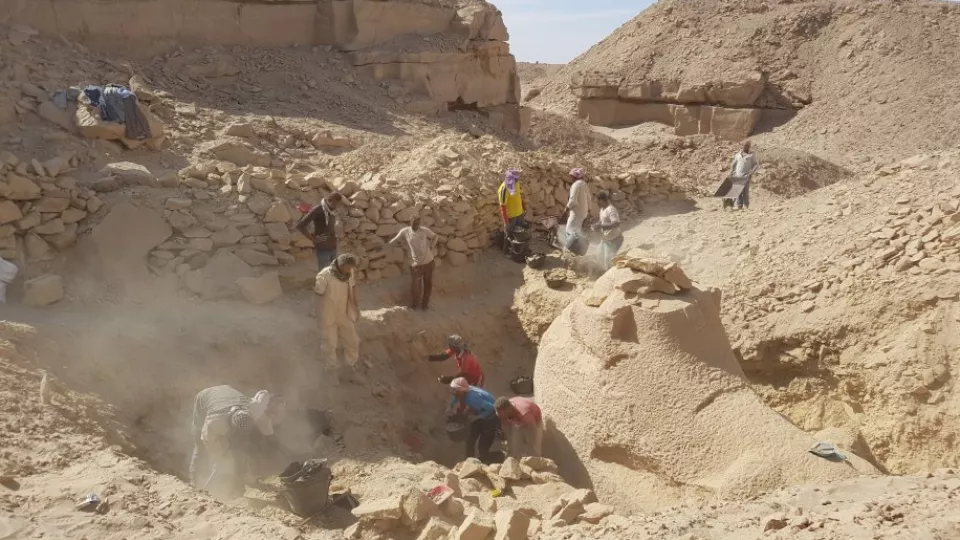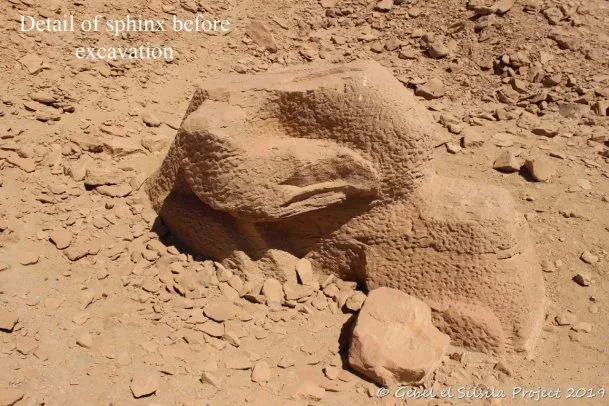"This discovery is unique, as it is the first intact ram-headed sphinx found in a workshop, together with a cobra, and it reveals the approximate size of the sphinxes along the 'Avenue of Sphinxes' between the Khonsu temple at Karnak and the Luxor Temple", says John Ward.
During the sphinx excavations the team discovered a smaller practice piece of another sphinx placed up-side-down next to the large sculpture’s stomach, perhaps carved by an apprentice. Both sculptures are preserved in a rough-cut and prepared for transportation, but were likely abandoned at Gebel el-Silsila as the larger sculpture fractured. Since then, later Roman quarry activity buried the sphinxes in spoil.Near the practice piece, embedded in the walls of a contemporary workshop, a rough-cut uraeus (coiled cobra) was also discovered, made to crown the head of the larger sphinx, and a blank round-top stela.
During the excavations, hundreds of hieroglyphic fragments were discovered, belonging to a destroyed Naos of Amenhotep III (Naos E) together with new sculpture fragments of the associated falcon. In addition, parts of an obelisk, including its pyramidion, were retrieved.
Included in the find is also a quarry text written in red ochre during the reign of Amenhotep III (around 3350 years ago) at the time of the opening of the quarry, preserved with the depiction of a large scale figure. The team’s epigraphers are currently working on the text and image.
Excavations and digital recordings are scheduled to continue during the mission’s upcoming field season.
Contact:
Maria Nilsson
Researcher at Classical archaeology and ancient history
maria [dot] nilsson [at] klass [dot] lu [dot] se (maria[dot]nilsson[at]klass[dot]lu[dot]se)

